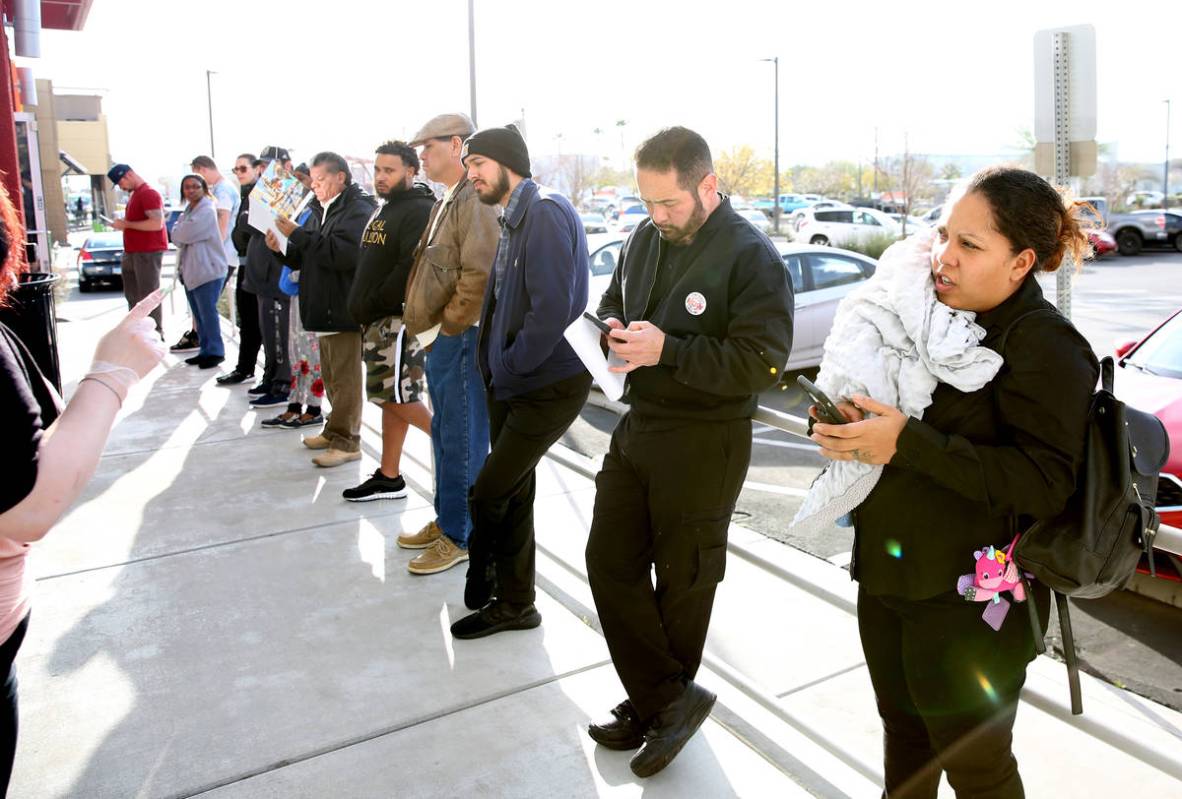Nevada’s unemployment claim phone lines tied up for days, frustrating many

When Cassandra Raina first tried to file for unemployment online on March 15, a message popped up on her screen saying she would need to call the Nevada Department of Employment, Training and Rehabilitation to complete the process.
The following day, the department’s phone line put her on hold for six hours. The former P.F. Chang’s server tried again, this time calling before the office opened. Nothing.
More than a week later, she still has been unable to get through the unemployment offices’ phone lines despite calling daily.
“I call at 8 a.m. (when they open), and the queue is already full for the day,” Raina said.
Companies across the valley have been furloughing and laying off staff in recent weeks amid the coronavirus outbreak and the mandatory 30-day shutdown for all nonessential businesses.
Local unemployment offices have seen “quite a few increases” in claimants since, said Rosa Mendez, spokeswoman for the department. The most recent state unemployment data from the office is from January, when Nevada’s unemployment rate hit a record low at 3.6 percent.
Asking for patience
The department is encouraging people to view its YouTube videos for help when phone lines are busy and file claims online at “non-peak hours” — such as the middle of the night or early morning — to avoid lag and allow those without internet connection to use the phone lines.
In the meantime, the centers are looking to expand staffing levels to answer phones, which are open to callers weekdays from 8 a.m. to 8 p.m.
“We ask people to be patient,” Mendez said.
But unemployed Nevadans are growing frustrated as repeated filing attempts go nowhere.
Amanda Flores, who was let go from her marketing job at Five Star Mortgage last week, said she has been trying to get through the phone lines on a daily basis to complete her online claim. She said she wished the system was better organized and gave claimants an option to schedule a phone interview online.
Flores has applied for a few jobs in the meantime but isn’t optimistic about getting offers at a time like this.
“I understand a lot of other people got laid off and it’s not just me,” she said. “I’m lucky that I have enough money this month … (but my savings are) not enough to last me another month after that.”
Jordan Partier lost two event-dependent jobs the weekend of March 13: one full-time as an automation programmer and operator for Show Group Production Services/Showrig, the other on-call as an automation technician at Cirque du Soleil.
He said his claim has been pending for days, and emails about its status have gone unanswered.
For the past five days, he said, he calls the office at 8 a.m. or slightly before, is put hold and then hangs up around noon when he is told the queue is full.
“We’re not in dire need (of money), but we will be if I don’t get a response,” he said. “It all adds up. … I’m on the phone a lot to contact anyone to see if they can furlough or defer payments. Some have been really helpful; some have not.”
Raina, who has never had to file for unemployment before, said she also worries about future payments. Right now, she doesn’t have enough for next month’s rent.
“I have zero income coming in … (but) my rent is still due the first,” she said. “I have a five-day grace period, and that’s it.”
How long will funding last?
While the number of unemployment claims is climbing in Nevada, a Wednesday report from the Economic Policy Institute said the figure could go even higher.
The report said the national economy could lose 14 million jobs by summer 2020 as businesses across the country shutter to help curb the spread of COVID-19. Nevada is the state hit worst in this projection, which assumes a $1 trillion fiscal stimulus, with 14.2 percent of private-sector employees losing their jobs.
As of Wednesday morning, Mendez said the state’s unemployment insurance fund stood at $1,963,884,009. Before the COVID-19 pandemic, it was at $1.98 billion.
“We started this whole thing with a nice, healthy trust fund amount,” about double what it was at the start of the Great Recession, she said.
UNLV political science professor Michael Bowers said that during the Great Recession, Nevada’s unemployment insurance fund was depleted quickly, as it was in most other states. Those states tapped into federal government loans to pay unemployment benefits.
Mendez said the agency is confident in the fund’s balance “as of now,” but its standing could change based on factors like the volume and duration of claims.
“How long it will last, I can’t tell you,” Mendez said. “The numbers are changing (constantly).”
Contact Bailey Schulz at bschulz@reviewjournal.com or 702-383-0233. Follow @bailey_schulz on Twitter.